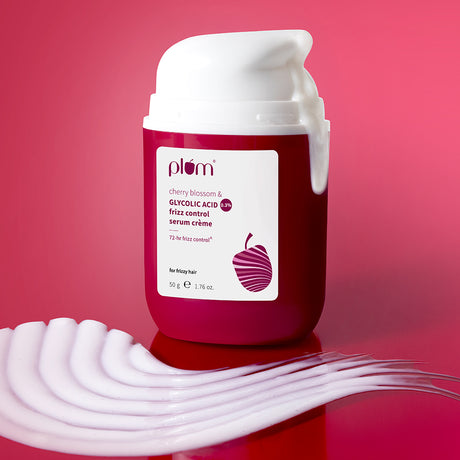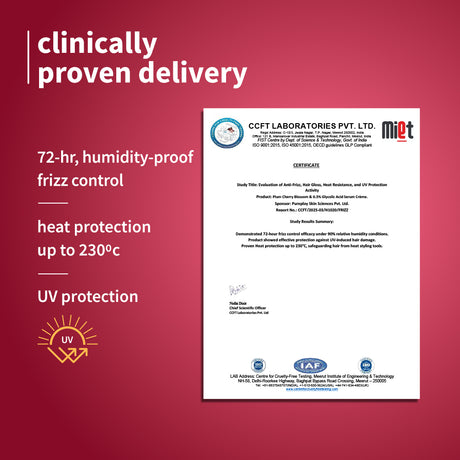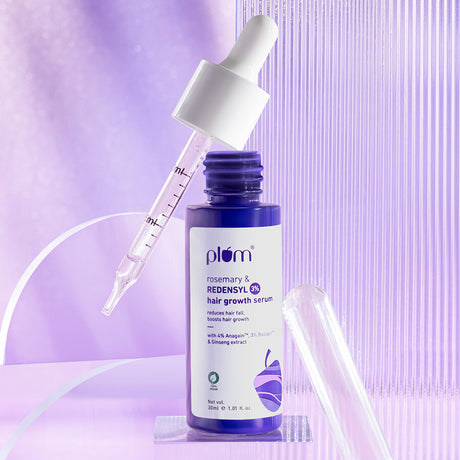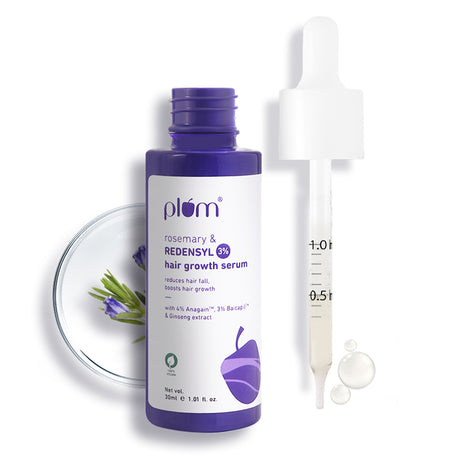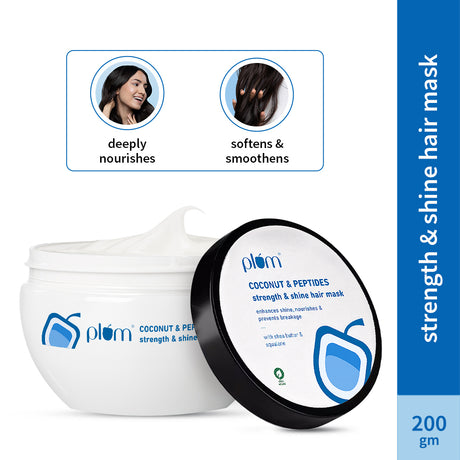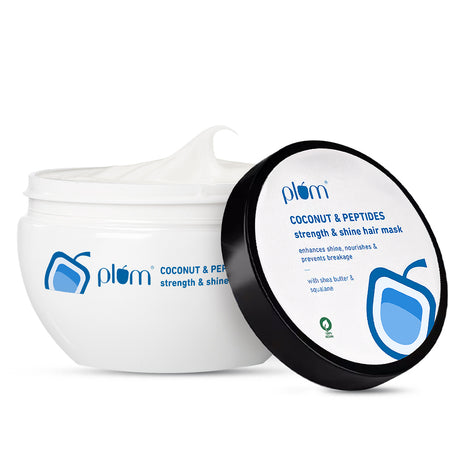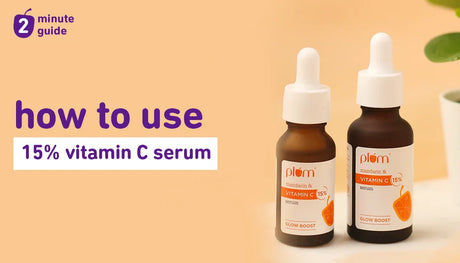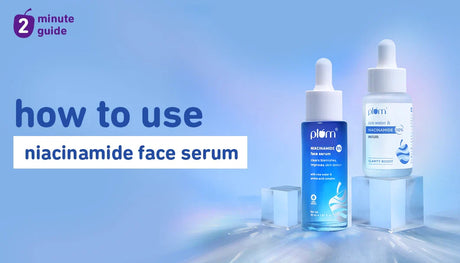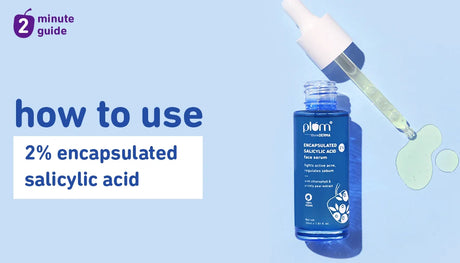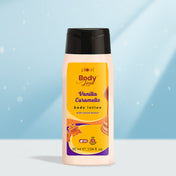
IN THIS ARTICLE
If your hair feels rough, frizzy, and breaks at the lightest touch, it could be your hair's way of asking for help and extra care. Between heat styling, colouring, wrong products, pollution, and stress, your hair strands go through a lot, until one day, it stops feeling healthy and turns dull, brittle, and unrecognisable.
But here's the good news: hair damage isn't the end of your healthy hair journey. It's a signal. One that tells you your hair needs repair, nourishment, and consistency; not quick fixes, treatments, or heavy products.
With the right hair care routine and ingredients, you can absolutely bring your hair back to strength, shine, and softness. Let's find out how.
What does damaged hair look like?
Damaged hair doesn't always mean broken or falling strands. Sometimes, it can show itself subtly in the form of rough ends, dullness, or easily tangled hair. Here's what you might experience if your hair is damaged:
- Hair feels dry, coarse, or brittle.
- You notice more split ends than usual.
- It lacks shine or feels lifeless.
- Hair breaks when brushing or tying.
- Curls lose shape or bounce.
Signs of damaged hair
Some of the well-known symptoms of damaged hair are:
- Excessive frizz that no serum seems to control.
- Uneven texture, soft at roots, rough at ends.
- Hair feels "straw-like" or porous after washing.
- You need more conditioner or oil than before.
- It takes forever to dry or gets greasy too soon.
If two or more of these sound familiar, your hair's structure (the protein and lipid layers) is likely compromised.
Causes of damaged hair
Damage is a process that happens over time. The common reasons for damaged hair are:
- Frequent heat styling (straighteners, curlers, blow-drying).
- Chemical treatments (bleaching, perming, coloring).
- Harsh shampoos that strip natural oils.
- Constant, direct UV exposure and pollution.
- Lack of nourishment and hydration.
- Tight hairstyles and mechanical stress.
How to repair damaged hair - step by step
Repairing damaged hair is easy, provided you give your hair the care and nourishment it needs and deserves. Here are some ways to reverse hair damage:
-
Switch to a gentle cleanse.
Throw away your harsh shampoos and switch to a mild, gentle shampoo that removes dirt and oil buildup without stripping moisture.
-
Deep condition regularly.
Conditioning is like food for your hair that nourishes it deeply. A repairing mask or conditioner infused with proteins and oils helps rebuild lost structure.
-
Use a strengthening serum.
Serums with peptides, keratin, or plant-based actives can help reduce breakage and improve elasticity. It also helps reduce dryness, breakage, and tangles, enhancing the quality of your hair.
0.3% Glycolic Acid & Cherry Blossom Frizz Control Serum Creme
-
Trim split ends.
Contrary to what has been repeatedly said, trimming doesn't make hair grow faster. However, it prevents split ends, further breakage, and reduces damage, giving a healthier appearance
-
Limit heat styling.
Limit heat styling, and if you must, always use a heat protectant and the lowest possible temperature.
-
Protect from UV and pollution.
Protect your hair from rough winds and direct sunlight. Cover your hair or use a leave-in spray when outdoors for long hours.
-
Use a silk pillowcase.
Friction from your pillowcase can cause tangles, breakage, and hair loss. Switch to a silk or satin pillowcase and scrunchies to protect your hair against damage. Similarly, do not use a rough towel to dry your hair after shampoo. It is best to use a microfibre towel.
-
Opt for hair oils and serums.
Hair oils and hair growth serums penetrate hair follicles and nourish your scalp. Massaging your hair scalp and hair with oil and serums helps boost blood circulation, hydrates your strands, and reduces damage. Additionally, a hair serum boosts hair growth, reduces hair fall, and improves hair quality.
Hair care routine for damaged hair
Step 1: Cleanse (2-3 times a week)
Use a mild shampoo to remove impurities. Look for ingredients such as peptides, protein, and other enriching components.
Step 2: Repair (2 times a week)
Apply a rich hair mask for damaged hair, looking for ones that contain shea butter, keratin, or plant oils to deeply condition and strengthen.
Step 3: Nourish (Daily)
Use a hair growth or repair serum on the roots to boost hair growth, restore elasticity, and reduce breakage.
Step 4: Protect (styling)
Always use a heat protectant or a light serum to prevent heat-induced protein loss.
Step 5: Maintain (Weekly)
Massage your scalp with nourishing oils like argan, coconut, or castor oil once a week to boost circulation and overall hair health.
What are the best hair masks for damaged hair?
The best hair masks are those that contain hydrating ingredients and nourish your hair without weighing it down.
While looking for the best hair mask for damaged hair, look for ingredients that repair, moisturize, and protect, for example:
-
Shea butter & coconut oil to deeply condition dry ends.
-
Keratin, peptides & amino acids to strengthen internal hair bonds.
-
Aloe vera & glycerin to restore hydration.
-
Avocado oil & jojoba oil to smooth and seal cuticles.
How often should you use a hair mask?
Depending on the severity of your hair damage, you can use a hair mask once or twice a week. If your hair is severely damaged, start with twice a week. Once you can see visible improvements in its quality, switch once a week.
Do not use it daily as it can cause buildup and could weigh your hair down. Moreover, do not use an excessive quantity. Consistency, not excess, gives lasting results.
Advanced solutions for severely damaged hair
If your hair is severely damaged, extremely weak, or overprocessed with symptoms like matted strands, roughness, dryness, and split ends, you can opt for advanced treatments like:
- Bond-building treatments like peptide or keratin infusions
- Scalp serums to improve root strength and stimulate growth.
- Professional hair spas with protein or moisture therapy.
Hair care habits that can damage hair and prevent its recovery:
- Overwashing or shampooing daily.
- Using harsh sulfate or alcohol-based products.
- Skipping heat protection before styling.
- Applying excessive oils without cleansing properly.
- Relying only on home remedies without a consistent care plan.
How long does it take to repair damaged hair?
You must not expect recovery of damaged hair instantly, as it is a gradual process. However, with consistent efforts, including removal of split ends, you can see noticeable improvements in 4-6 weeks. Severely damaged hair can take longer to repair itself.
Hair damage doesn't happen overnight, and neither does repair. But with gentle cleansing, deep conditioning, and the right strengthening products, your hair can absolutely bounce back.
FAQs
Can damaged hair be repaired completely?
Yes, you can repair damaged hair with a consistent hydrating hair care routine, protein treatments, and trims.
Is it better to cut off damaged hair or repair it?
If damage is severe at the ends, trimming helps prevent it from spreading. However, if it is mild damage, like frizz, dryness, or roughness, you can repair it with hydrating treatments.
What are the first signs of damaged hair?
Dryness, frizz, dullness, and breakage are common early indicators.
Can you repair heat-damaged hair without cutting it?
Yes, you can. With deep conditioning, leave-in treatments, and peptide-based serums and masks, you can restore hair elasticity.
What's the best treatment for severely damaged hair?
Bond-repair masks, protein-infused serums, and scalp-nourishing oils are the best treatments for severely damaged hair.
Do hair masks actually repair damaged hair?
They don't "heal" hair but can significantly improve texture, strength, and smoothness.
Can bleached hair be fully repaired?
Not fully, but it can be made healthy and strong again with regular care and the right treatments.
What ingredients repair damaged hair best?
Keratin, biotin, argan oil, shea butter, peptides, and ceramides are some ingredients that can repair damaged hair.
Is oiling good for damaged hair?
Yes, oiling your hair regularly can help repair damaged hair. However, it must be done moderately and followed by gentle cleansing. Oils seal moisture and protect cuticles.
What not to do with damaged hair?
If your hair is damaged, avoid heat, tight hairstyles, harsh shampoos, and skipping conditioner.



